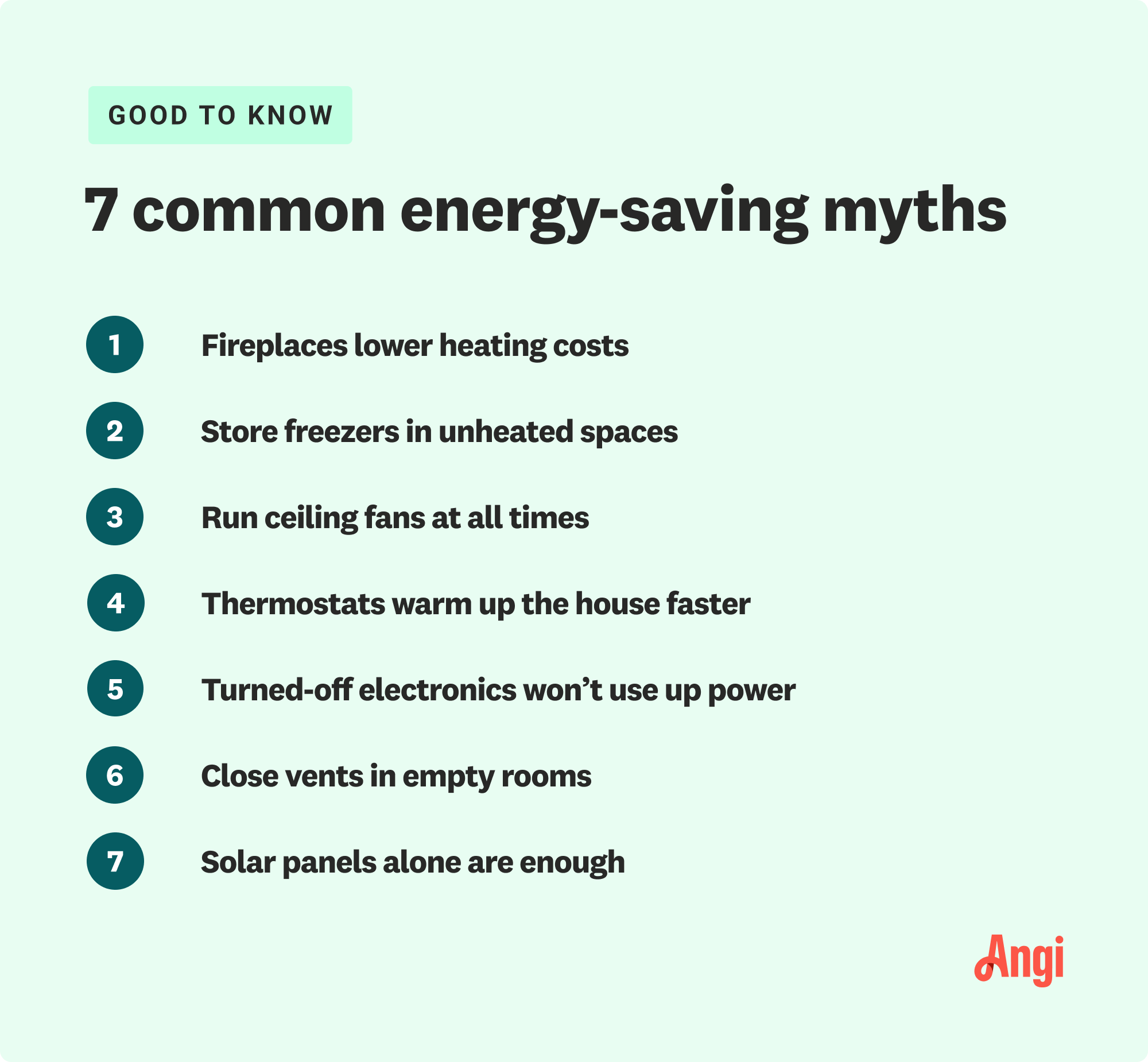
What you’ll pay in Columbus, OH, for furnace repairs depends on many factors. Here’s a breakdown of what can go wrong and the cost to fix those issues.
Saving energy isn’t just good for the environment—it’s also great for your utility bills


There’s nothing quite like the satisfaction of reducing your carbon footprint while shaving a few bucks off your monthly energy costs. And when it comes to conserving energy, you might think you’re doing everything right. But if you fall for these seven most common energy-saving myths, you might be in for a rude awakening when your next power bill arrives.

There are few things more relaxing than spending a cold winter’s night curled up in front of the fireplace with a good book and a delicious cup of cocoa. But if you want to use your fireplace to cut your energy use and lower your heat bills, think again.
Your damper must remain open to vent the toxic gasses that burning wood produces. This protects your lungs but can spike your energy use because having it open lets in as much outside air as an open window. While the room feels pleasant, the overall temperature in your home almost certainly will drop, which may have you turning up the thermostat.
It’s not hard to understand how this myth started. After all, freezers are cold, right? So why not help them do their job by keeping them in an unheated garage or outbuilding? Well, not exactly.
To keep your frozen food safe, your freezer has to maintain a relatively constant temperature. And an unheated space most definitely isn’t the right environment for that. The temperatures in these areas will fluctuate widely, meaning your freezer will have to work harder and consume more energy to hold a constant temperature.
It’s true that ceiling fans can help cool you down more quickly in a hot room because the circulating air cools your skin faster. This means you’re going to be less likely to jack up the AC.
But a ceiling fan isn’t going to do much—if anything—to cool a hot room. So, yes, if you’re in a hot space, turning on the ceiling fan can help save energy when you use it with the AC. But if no one’s home, it’s best to give the ceiling fan a rest.

As long as your furnace is running, it’s operating at maximum capacity. Turning up the temperature will only cause your furnace to run for a longer period and could even make your home too hot.
Instead of turning the heat on blast, invest in a programmable thermostat. This can help you reduce your energy consumption and costs because it’ll automatically adjust the temperature settings on your HVAC for when you aren’t home.
And when it's time for the family to return, your programmable thermostat will gradually increase the heating or cooling to your crew's preferred temperature settings. This way, your house will feel perfect when you walk through the door at the end of a long day, but you're not paying to heat empty rooms.
Whether switched on or off, many electronic devices are using standby power if they're plugged in. According to the U.S. Department of Energy, keep this vampire power from cellphone chargers and other devices from inflating your energy bills by unplugging electronics when not in use.
Keeping a vent closed affects how your HVAC system processes air and causes the unit to work harder than it normally does because the balance has been thrown off.
Instead, if you want to give your HVAC a bit of a break while lowering your energy consumption and your heating and cooling costs, you have several easy options.
Insulate your home and seal any gaps or air leaks, especially in attics and around doors and windows, to help prevent energy loss and make your home more energy efficient overall. In fact, upgrading your windows can be one of the best investments you can make if you want to cut your home's energy consumption.
Solar panels can be an ideal solution when it comes to energy efficiency. But they're not right for every home. Even if you completely trick out your house with top-of-the-line solar energy, you won't get the savings you're looking for if your home is filled with drafts and air leaks. The same holds true if you live in a cold climate not fit for solar energy. In this case, you might find yourself relying on your traditional HVAC far more often than you'd like.
From average costs to expert advice, get all the answers you need to get your job done.

What you’ll pay in Columbus, OH, for furnace repairs depends on many factors. Here’s a breakdown of what can go wrong and the cost to fix those issues.

When your window AC isn’t cutting it, but central AC is too expensive, installing a new ductless mini-split AC may be the cooling solution you’re looking for. Find out what a mini-split costs and how to hire the right pros to get the job done.

Here's what you can expect when getting an estimate for coolant leak repair costs. The cost can vary based on the detection method used, the source of the leak, and the amount of damage that needs to be repaired in the aftermath.

What size heat pump do I need? Learn the various heat pump sizes and how to calculate which size is best for your home.

Who do you call to fix a boiler? This easy guide will help you hire the right pro for the job of fixing your boiler.

You’ll need to get creative if you want to run your portable AC in a windowless room. Here’s how to vent a portable air conditioner without a window.